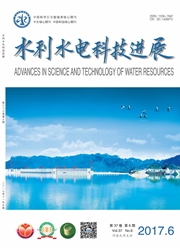

 中文摘要:
中文摘要:
为研究干湿循环作用下钢土界面剪切特性对钢护筒嵌岩桩周土软化变形规律的影响,通过改进的室内直剪试验,设计一定含水率、干密度、级配的初始试样,进行了初始状态和4 次干湿循环共5 组工况的试验,依次在50 kPa、100 kPa、150 kPa 和200 kPa 这4 种法向应力条件下进行钢土界面和土体本身的剪切试验.试验结果表明:干湿循环对土体本身的影响大于对钢土界面抗剪强度的影响;钢土界面剪切过程中应力-应变关系呈弹塑性变化,没有出现应变软化现象;钢土界面和土体本身摩擦角变化不大,而黏结力呈先增大后减小的变化趋势.
 英文摘要:
英文摘要:
In order to study the influence of the shear properties at the steel-soil interface with drying-wetting cycles on the softening deformation of soil around the steel-casing rock-socketed pile, initial samples with a certain moisture content, dry density, and gradation were designed. And shear tests on the steel-soil interface and soil body were carried out in five cases, including a initial state and four different numbers of drying-wetting cycles. In each case, samples were subjected to four vertical pressures:50 kPa, 100 kPa, 150 kPa, and 200 kPa. The results show that the influence of drying-wetting circles on the shear strength of soil is greater than that on the shear strength of the steel-soil interface. During the shear process, there is an elastic-plastic stress-strain relationship, and no strain-softening phenomenon occurs at the steel-soil interface under drying-wetting circles. With the increase of the number of drying-wetting circles, the friction angles of the steel-soil interface and soil change little, while their cohesive forces increase first and then decrease.
 同期刊论文项目
同期刊论文项目
 同项目期刊论文
同项目期刊论文
 期刊信息
期刊信息
